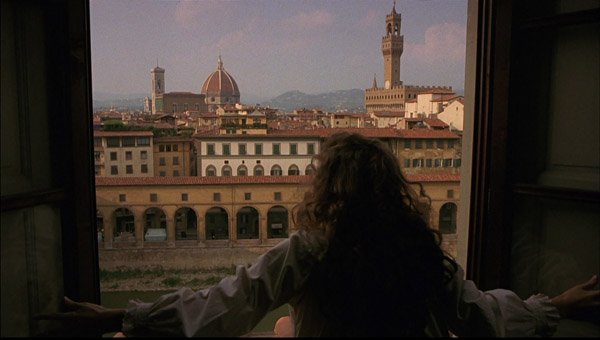
 |
| Home • Reviews • Forums • News 2015 • 2013 • 2012 • 2009 • 2008 • 2007 • 2006 • 2005 • 2004 RSS Feeds • FOV Factor Table • Sensor Sizes | Definitions: A-D • E-H • I-L • M-P • Q-U • V-Z | Sitemap Articles • Archived Websites (Pre-DigitalDingus): D100 Lounge • E-10 Club | Contact |
| A Room With A View Special Edition |
|
| Introduction December 20, 2008 |
|
| A Room With A View: Introduction / The Movie • A Room With A View: Screencaps A Room With A View: Features & Specifications • A Room With A View: Conclusion
|
|
Recently, there was a TV adaption by Andrew Davies, and I cannot really comment on it per se as I haven't seen it, but the general consensus is it is controversial and seems to conflict with E.M. Forster's original intent. Sometimes a TV adaption is better than a full-out studio production, but in this case, the opposite could be true. Andrew Davies is renowned and celebrated for adapting several classics to the screen, so you'll have to see for yourself if the 2007 TV adaption is more favorable. In case you're interested in A Room With A View, heard about it from friends in casual discussion, but never knew what it was exactly about, I'll write a little brief for you. A Room With A View is set in the Edwardian period which lasted roughly from 1901 to 1910. This was a new British class system, strict and disciplined in style and behavior, but the social class constructs were actually opened-up to a wider spectrum of society. And this is where we have a conflict within the system, and where E.M. Forster found some great content for his novel. King Edward VII, of which this period is named, was less rigid than his Queen mother, and loved to travel and enjoy society abroad. Known as the Uncle of Europe, he was much more interested in foreign affairs (geographically AND socially as some could say) and living a little more loose than his mother, while still possessing a style which conveyed upper-classness. When watching A Room With A View, observe the attire. Director James Ivory does a magnificent job at conveying the period where style was just as important as class. The Edwardian period also consisted of leisure sports, and we see these sports being played as well. Of course, while the men were free to play, women were still expected to be passive and non-confrontational, as well as docile and permissive, while never outspoken nor revealing what was stirring in their hearts. Lucy Honeychurch (Helena Bonham Carter) is such a character. She might seem like all the ladies on the outside, but inside, she has a lot of questions. And those questions are beginning to affect her behaviors. Things that are indelicate can sometimes be beautiful. While on a trip to Florence, Italy with her cousin Chartlotte Bartlett (Maggie Smith), their rooms do not have any views of the beautiful surroundings, although they were promised a room with a view. While at a social dinner in the privileged boarding house, their comments are overheard by Mr. Emerson (Denholm Elliott) who is travelling with his son, George Emerson (Julian Sands). Mr. Emerson says with certainty the two ladies should swap rooms with he and his son. A few interesting scenes early in the film. We observe Lucy playing a piano. She does this with great focus and pounds the keys with unrelenting passion. Another scene is where Chartlotte tells Lucy (who is in her nightgown) to move away from the window as she could be "seen from the outside". These two scenes are iconic in nature, and represent what E.M. Forster was conveying to his reader in the novel. This comes through magnificently in the movie. |
|
| Home • Reviews • Forums • News 2015 • 2013 • 2012 • 2009 • 2008 • 2007 • 2006 • 2005 • 2004 RSS Feeds • FOV Factor Table • Sensor Sizes | Definitions: A-D • E-H • I-L • M-P • Q-U • V-Z | Sitemap Articles • Archived Websites (Pre-DigitalDingus): D100 Lounge • E-10 Club | Contact |